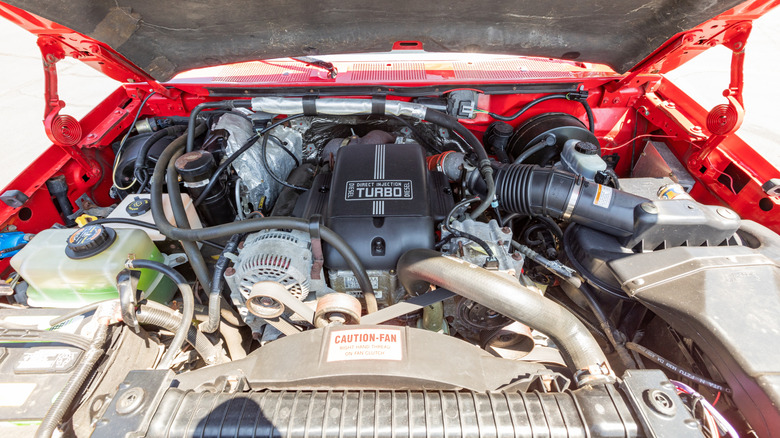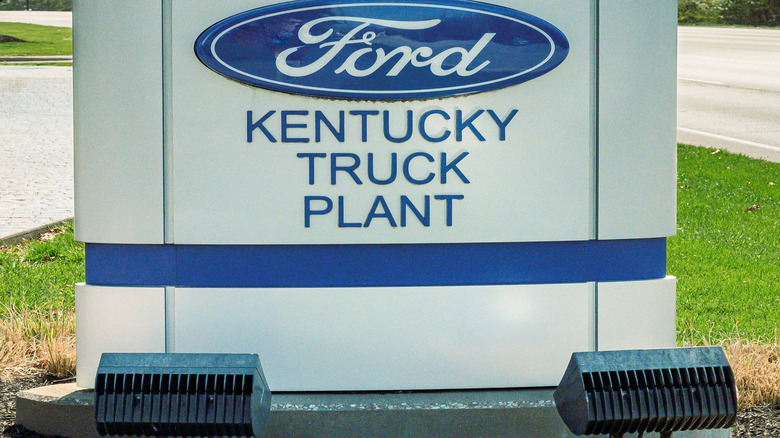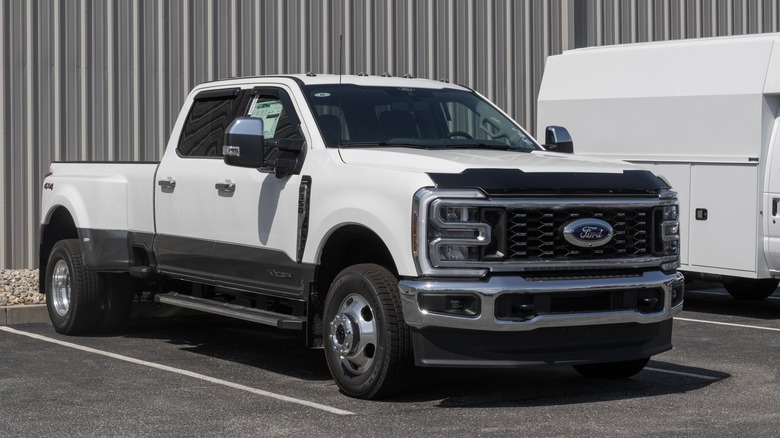Who Makes Power Stroke Engines And Where Are They Built?
If you've spent any time with diesel truck buffs, chances are you may have heard some of them boast about the Power Stroke. But did you ever ask yourself what exactly the Power Stroke really is? Well, it is Ford's go-to name for its heavy-duty diesel engine lineup, which powers the F-series Super Duty trucks, renowned for their ability to tow massive loads without flinching. It may surprise you to learn that for years, Ford didn't actually make these engines itself. Instead, it outsourced the manufacturing to Navistar International (formerly International Truck and Engine Corporation or ITEC), which introduced the first-ever 7.3-liter Power Stroke Turbo Diesel in 1994. This collaboration lasted through some iconic — and some less so — variants, such as the 6.0L and 6.4L diesels.
Then came 2010, and Ford decided that it had had enough of outsourcing one of its most valuable bragging rights, and everything changed. Since then, Ford's own engineers have been designing and building the Power Stroke engine in-house. But where exactly are they put together? The 6.7L Power Stroke V8 (technically the most current version of this line) is assembled in Ford's enormous Chihuahua Engine Plant in Mexico. Once the engines are finished, they make their way north to Louisville, Kentucky, where Ford has another plant (the Kentucky Truck Plant), and it's here that the engines are then installed in Super Duty trucks. So, the next time you come across a Ford F-350 hauling loads, you'll know exactly where its power comes from.
Inside Ford's Power Stroke production
Ford's Engine Plant in Chihuahua isn't just another facility; it's the beating heart of Power Stroke diesel engine production. It opened back in 1983 and is one of Ford's largest engine plants in North America, spanning 247 acres and over 727,000 square feet of manufacturing space, which is massive to say the least. About 2,430 employees work in this multi-plant complex, of whom about 2,200 work the hourly assembly lines.
In 2010, just shortly after Ford had broken off its collaboration with Navistar International, the company introduced a dedicated line, particularly for the current Power Stroke V8. And within a few years, the factory was rolling out astounding numbers to try and keep up with Ford's growing Super Duty demand at the time. By 2013, the facility had produced its 500,000th Power Stroke engine. With new assembly lines, quality systems, and automation added to enhance uniformity and control, Ford boasts huge production muscle in diesel engines, all thanks to the scope and depth of its investment — more than $2.5 billion in expansions. This has allowed Ford to not only make these Power Stroke V8s in large quantities, but do so with close engineering supervision at every turn, which is one of the main reasons the current 6.7L is praised for its longevity and reliability (overall, and in towing massive loads).
Why Ford took Power Stroke production in-house
Come 2011, Ford was dealing with recurring issues concerning the 6.0L and 6.4L Power Strokes built by Navistar. Some complained about clogged DPFs, others about EGR cooler failures, among other reliability issues. Sadly, these problems weren't just mechanical; they also damaged Ford's brand credibility and trust. At the time, fleet managers and DIY owners all wanted diesels they could count on, unlike the two Navistar-built versions. The worst part? Ford wasn't in a position to oversee any quality control or come up with rapid development measures.
So, Ford took a risk and made a bold move. It took over control of the Power Stroke diesel and brought all production under its own roof, a change that was more strategic than it was cosmetic. By building the new 6.7L Power Stroke in-house, the company could now control every development stage, from CAD design and metallurgy to serial production. In doing so, it made significant R&D investments, retooled plants, and ditched outdated alliances. What followed after all this? An engine constructed from the ground up according to Ford's specifications, featuring reverse-flow cylinder heads, CGI blocks, piezo injectors, and air-to-water intercooling, all designed specifically for Super Duty tasks.
All these efforts paid off quickly. By rolling out the 6.7L with remarkable benchmarks — 390 horsepower and 735 lb-ft of torque when first introduced — Ford proved it could improve performance and meet EPA emission standards on its own terms.


